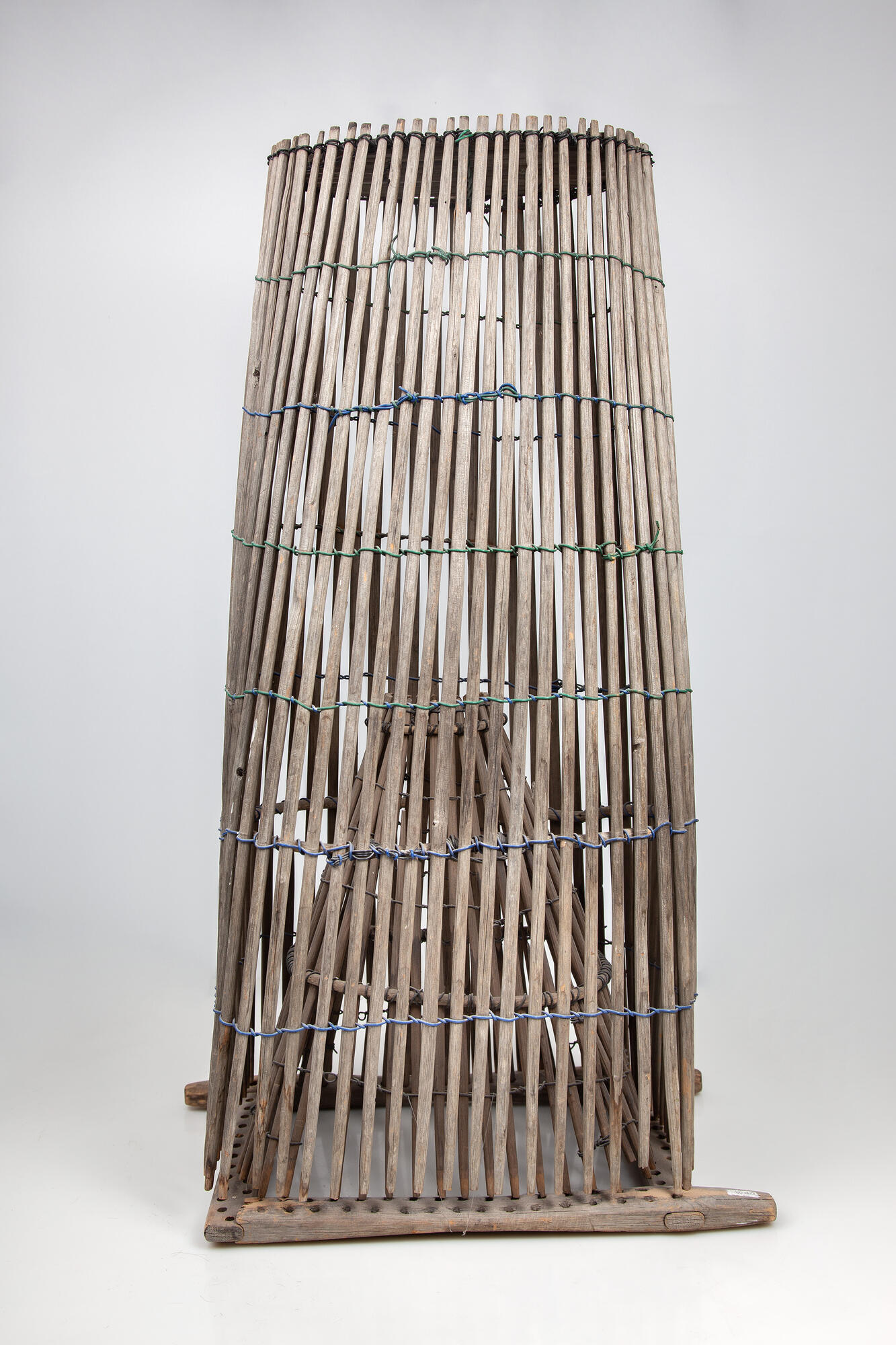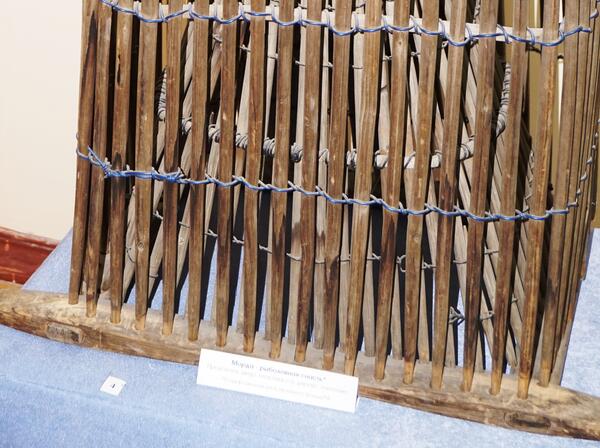Fishing is one of the main occupations of the Forest Nenets, along with hunting and reindeer herding. The Nenets fish throughout the year and eat salted, smoked, dried, boiled and fresh fish. Most often, sturgeon, whitefish, salmon species of fish, as well as ide and saffron cod are caught using nets. For fishing, the Nenets use different gear, which they would make on their own from natural materials. Nets were woven from hemp thread using a wooden needle, floats were carved from wood, sinkers were made from thin wire, and muzzle traps were made from sharp poles.
A muzzle is a fish trap popular with the Nenets and known since ancient times. It is woven from thin rods and consists of two baskets in the shape of a truncated cone. The small basket is inserted into the large one. The small basket has a hole through which the fish swims and finds itself in a double trap.
Usually a muzzle is up to 1.5 meters long. To make a muzzle, the Nenets take different materials: for the base — the rhizomes of cedar, spruce and bird cherry, for the side part — larch or red willow twigs, previously soaked in hot water for greater flexibility. Inside the muzzle there are two funnels that let the fish into the trap, but do not allow it to get back.
The muzzle is used for fishing along the shore. Before putting it into the water, spruce branches are placed inside, which lure fish, and the hole in the upper cone is plugged with hay. Sinkers are attached to the base so that the trap does not float, and then the muzzle is tied with a strong rope to a bush or a stake driven into the bottom of the reservoir. The muzzle must be checked regularly: otherwise there will be too much fish inside. Such crowded traps resulted in the expression “the muzzle will crack”.
The Nenets block small rivers and spills with wooden bars made of poles. Muzzles are inserted into the gaps between the locks, which are filled with a great amount of fish. In autumn, when fish begins to relocate up the river to areas of better winter habitat, the fishermen set traps along the river, and in the spring, when the fish descends to the water meadows for spawning, fishermen turn the traps over, setting them against the current.
A muzzle is a fish trap popular with the Nenets and known since ancient times. It is woven from thin rods and consists of two baskets in the shape of a truncated cone. The small basket is inserted into the large one. The small basket has a hole through which the fish swims and finds itself in a double trap.
Usually a muzzle is up to 1.5 meters long. To make a muzzle, the Nenets take different materials: for the base — the rhizomes of cedar, spruce and bird cherry, for the side part — larch or red willow twigs, previously soaked in hot water for greater flexibility. Inside the muzzle there are two funnels that let the fish into the trap, but do not allow it to get back.
The muzzle is used for fishing along the shore. Before putting it into the water, spruce branches are placed inside, which lure fish, and the hole in the upper cone is plugged with hay. Sinkers are attached to the base so that the trap does not float, and then the muzzle is tied with a strong rope to a bush or a stake driven into the bottom of the reservoir. The muzzle must be checked regularly: otherwise there will be too much fish inside. Such crowded traps resulted in the expression “the muzzle will crack”.
The Nenets block small rivers and spills with wooden bars made of poles. Muzzles are inserted into the gaps between the locks, which are filled with a great amount of fish. In autumn, when fish begins to relocate up the river to areas of better winter habitat, the fishermen set traps along the river, and in the spring, when the fish descends to the water meadows for spawning, fishermen turn the traps over, setting them against the current.





